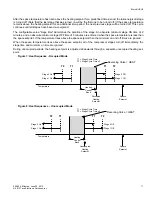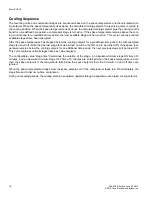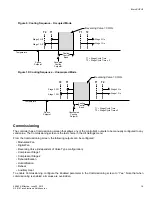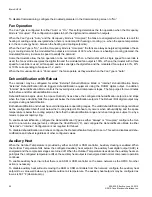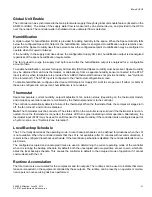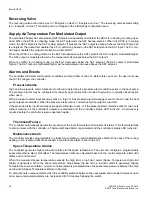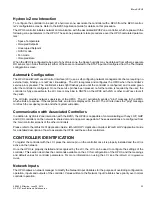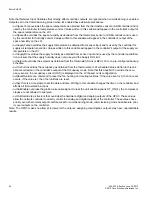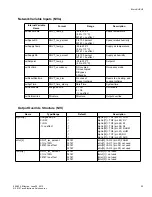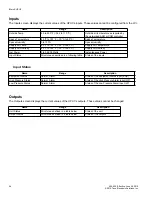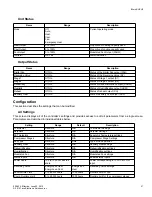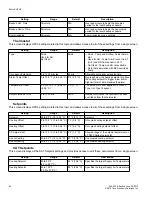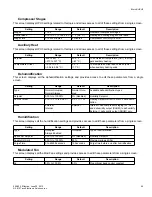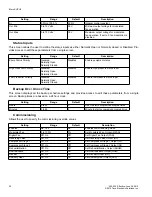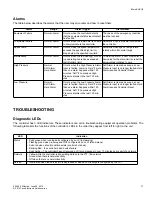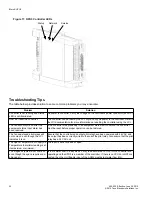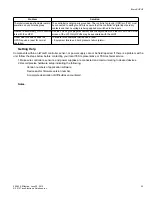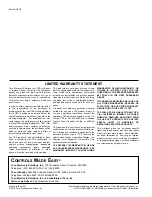
iWorx® HPU3
505-035, Effective: June 30, 2015
31
© 2015 Taco Electronic Solutions, Inc.
Alarms
The table below describes the alarms that the user may encounter and how to reset them.
TROUBLESHOOTING
Diagnostic LEDs
The controller has 3 LED indicators. These indicators can aid in troubleshooting equipment operation problems. The
following table lists the functions of the controller’s LEDs in the order they appear from left to right on the unit.
Alarm
Range
Alarm Trigger
Alarm Reset
Equipment Failure
Normal, Alarm
Occurs when the controller detects
that the equipment status input contact
has faulted.
The cause of the emergency condition
must be resolved.
Thermostat Failure
Normal, Alarm
Occurs when the thermostat is unable
to communicate to the controller
Automatic when thermostat connected to
the controller.
Space Temp
Normal, Alarm
Occurs when the space temperature
exceeds the specified high limit or
drops below the specified low limit.
Automatic when space temperature
returns within its normal range.
Maintenance
Normal, Alarm
Occurs when the fan, heating, or cool-
ing operating hours have exceeded
their Runtime limit.
To clear the alarm, a user must enter a
new value for the alarm limit or reset the
accumulated runtimes to zero.
High Pressure
Normal,
Soft Alarm,
Hard Alarm
Occurs when the High Pressure Alarm
input is faulted. Alarm is 'Hard' if more
than one alarm happens within 120
minutes. 'Soft' if no previous High
Pressure alarms in the last 120 min-
utes.
Soft Alarm is cleared as soon as Low
Pressure Input is no longer faulted. Hard
Alarm requires Controller Reset.
Low Pressure
Normal,
Soft Alarm,
Hard Alarm
Occurs when the Low Pressure Alarm
input is faulted. Alarm is 'Hard' if more
than one alarm happens within 120
minutes. 'Soft' if no previous High
Pressure alarms in the last 120 min-
utes.
Soft Alarm is cleared as soon as Low
Pressure Input is no longer faulted. Hard
Alarm requires Controller Reset.
LED Indication
Status
– Solid green when running and configured by an LCI (networking)
– Flashing green when running and NOT configured by an LCI (stand-alone)
– Solid red when a fault condition exists (control shut down)
– Blinking Red - the controller has a device failure
– Solid Amber - The controller has not received a LCI ping message in over 10 minutes and is part of a network.
Network
– Yellow while the controller is transmitting data onto the FTT-10A network
– Green when there is network activity
– Off when there is no network activity
Service
– Illuminated when the service pin is depressed or when a controller gets configured by the LCI.

